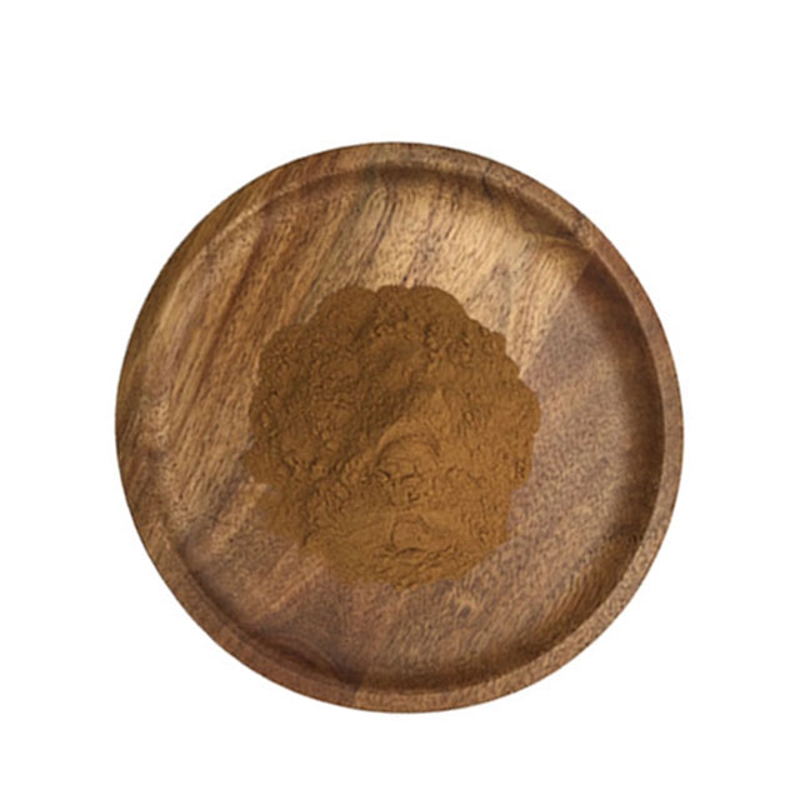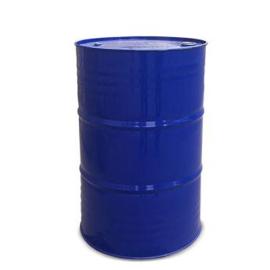-
Categories
-
Pharmaceutical Intermediates
-
Active Pharmaceutical Ingredients
-
Food Additives
- Industrial Coatings
- Agrochemicals
- Dyes and Pigments
- Surfactant
- Flavors and Fragrances
- Chemical Reagents
- Catalyst and Auxiliary
- Natural Products
- Inorganic Chemistry
-
Organic Chemistry
-
Biochemical Engineering
- Analytical Chemistry
- Cosmetic Ingredient
-
Pharmaceutical Intermediates
Promotion
ECHEMI Mall
Wholesale
Weekly Price
Exhibition
News
-
Trade Service
Helicobacter pylori is a first-class carcinogen colonized in the gastric mucosa, which is the main culprit of gastric cancer, and many guidelines in the world recommend eradication therapy
for adults.
At present, the mainstream therapy is mainly the quadruple therapy of "2 antibiotics + bismuth + antacid", but due to the influence of drug resistance, antibiotic side effects, and patient compliance, the eradication success rate is declining
.
According to relevant data, the eradication success rate of the four-line therapy recommended by China "amoxicillin + clarithromycin + bismuth + PPI" has dropped from more than 90% to 80%, or even lower
.
Its main disadvantages are as follows:
1.
Antibiotic resistance:
2.
There are many varieties of drugs and high medical costs
3.
Poor patient compliance
4.
Obvious side effects
5.
After eradication fails, the options are limited
Therefore, many clinicians are currently seeking a more effective, convenient eradication program with fewer side effects, so many doctors choose "dual therapy"
.
Definition and principle of action of one- and dual-dose therapy
The so-called dual therapy is an antibiotic + a PPI, antibiotics often use amoxicillin, PPI often use second-generation proton pump inhibitors, such as rabeprazole, esomeprazole, ilaprazole, or potassium competitive acid blocker (vonoraxen).
High-dose, high-frequency administration is commonly used, that is, double-dose proton pump inhibitor + ≥3g amoxicillin/day (given in 3 or more doses), so it is also called "high-dose dual therapy (HDDT)";
For example: amoxicillin 0.
75g, 4 times / day; Rabeprazole 20 mg 4 times / day; The course of treatment is 14 days
.
The rationale is roughly as follows:
1.
The antibacterial effect of amoxicillin on Helicobacter pylori is pH dependent:
When gastric acid in the stomach is fully inhibited, the pH level in the stomach can be sustained or can reach a level of more than 6 most of the day, amoxicillin can give full play to its antibacterial effect of killing Helicobacter pylori, that is, the more fully gastric acid secretion is inhibited, the higher
the antibacterial effect of amoxicillin.
By increasing the dose and frequency of antacids, the acid-suppressing effect of antacids can be enhanced, so that amoxicillin can exert a full antibacterial effect
.
Since the efficacy of proton pump inhibitors is affected by the differences in human drug metabolism genes, increasing the frequency and dose of proton pump inhibitors can reduce the influence of human genes on the acid-inhibiting effect of drugs, thereby improving the acid-inhibiting effect
.
2.
Amoxicillin has a time-dependent antibacterial effect on Helicobacter pylori:
That is, the longer the action time of amoxicillin on bacteria, the better its antibacterial effect, by increasing the frequency of administration of amoxicillin, it can not only increase the time of amoxicillin contact with the surface of the gastric mucosa, but also help to maintain the effective drug concentration of amoxicillin in the blood, thereby improving the bactericidal effect of amoxicillin on Helicobacter pylori and improving the success rate
of treatment.
In addition, the new antacid-potassium competitive acid blocker (vonoraxen), its acid-suppressing effect is not affected by human drug metabolism genes, and has the characteristics of the first dose to achieve full acid suppression, that is, taking a drug can achieve a full acid inhibitory level, its combination with amoxicillin dual therapy can make the antibacterial effect of amoxicillin earlier and more sufficient, thereby also reducing the probability of bacterial resistance to antibiotics and improving the success rate
of treatment.
Second, the development of dual therapy
As early as 1989, Unge et al.
first treated H.
pylori infection with amoxicillin (750 mg/time, 2 times/d) and omeprazole (40 mg/time, 1 time/d), but the eradication rate was only 62%.
In 1995, a multicenter clinical trial in Germany showed that amoxicillin (750 mg/time, 3 times/day) combined with omeprazole (40 mg/time, 3 times/day) was treated for 14 days, with a eradication rate of 91%, which was not used
at that time due to the high dose and frequency of administration.
In the mid-to-late 90s of the 20th century, scholars further conducted a series of clinical trials on the standard dose of dual treatment of H.
pylori infection, and its eradication rate was only 50%~70%, which was significantly lower than that of triple therapy and quadruple therapy, so dual therapy did not become the standard treatment plan
for H.
pylori infection.
Subsequently, triple therapy containing clarithromycin was widely used
clinically with its significant eradication rate.
However, due to the gradual increase of H.
pylori resistance to antibiotics, especially metronidazole, clarithromycin, levofloxacin, etc.
, the eradication rate of triple therapy gradually dropped to less than
80%.
At present, bismuth-containing quadruple therapy is recommended by domestic and foreign guidelines as the first-line eradication program
for H.
pylori infection with its eradication rate of more than 90%.
However, there are many types of bismuth-containing quadruple therapy, adverse reactions are also increasing, patient compliance is poor, costs are high, and the rate of antibiotic resistance is increasing, and after the failure of first-line regimens, there are few antibiotics available for remediation regimens, and there is an urgent need to develop new regimens for clinical use
.
Third, in recent years, related research on high-dose dual therapy
——In 2014, a study in Turkey showed that amoxicillin (1 g/time, 2 times/day) combined with omeprazole (20 mg/time, 4 times/day) was treated for 14 days, with a eradication rate of 81.
1%;
——In 2015, a prospective, multicenter, randomized controlled trial in Taiwan, China, showed that amoxicillin (750 mg/time, 4 times/d) combined with rabeprazole (20 mg/time, 4 times/d) was treated for 14 days, and the results showed that the eradication rate was as high as 96.
6%;
——In 2017, another study in Turkey showed that amoxicillin (750 mg/time, 3 times/day) combined with rabeprazole (20 mg/time, 3 times/day) had a eradication rate of 85%, similar to bismuth-containing quadruple therapy, and the adverse effects of dual therapy were few
.
——In 2019, Lan Chunhui's team found that the eradication rate of amoxicillin (750 mg/time, 4 times/d) combined with esomeprazole (20 mg/time, 4 times/d) and bismuth-containing quadruple therapy H.
pylori was about 90%, and the incidence of adverse reactions was significantly reduced
.
- Lu Hong's team used amoxicillin (1 g/time, 3 times/d) combined with esomeprazole (40 mg/time, 2 times/d) dual treatment, and the eradication rate of H.
pylori in ITT analysis reached 92.
5%, and the PP analysis reached 96.
1%.
——Song Zhiqiang's team reported that the dual regimen of amoxicillin (500 mg/time, 4 times/d) combined with rabeprazole (10 mg/time, 4 times/d) had an eradication rate of 87.
5% in H.
pylori analysis, 90.
2% in modified intention-to-treat (mITT) analysis, and 91.
0% in PP analysis
.
——In 2020, a large sample study by Zhou Liya's team showed that amoxicillin (750 mg each time, 4 times/d) combined with esomeprazole (20 mg/time, 4 times/d), the eradication rate of H.
pylori in ITT analysis was 87.
1%, and the PP analysis was 92.
4%.
- In 2019, a meta-analysis comparing high-dose dual therapy with bismuth-containing quadruple therapy evaluated four randomized controlled trials including 829 patients with H.
pylori infection, and the results showed that the eradication rate of high-dose dual therapy was similar to that of bismuth-containing quadruple therapy (PP analysis 88.
4% versus 91.
5%, ITT analysis 85.
5% versus 87.
2%; Mean P >0.
05), but the incidence of adverse reactions was reduced (14.
4% versus 40.
4%, P<0.
001), which may serve as a first-line eradication regimen
for H.
pylori infection.
So far, high-dose dual therapy has received widespread attention at home and abroad and has gradually been recognized
.
Fourth, the advantages and disadvantages of high-dose dual therapy
Multiple clinical studies of high-dose dual therapy have achieved satisfactory eradication rates, fewer adverse effects than bismuth-containing quadruple therapy recommended by guidelines, higher patient compliance, and lower
treatment costs.
Dual regimens containing novel P-CAB antacids have also demonstrated high efficacy and safety
.
It is reported that the "Sixth National Consensus on the Treatment of Helicobacter Pylori Infection (Treatment Part)" to be released in China will be updated as follows:
i.
e.
"affirm the efficacy and safety of high-dose dual regimens";
Professor Lu Hong from Renji Hospital of Shanghai Jiaotong University, a member of the consensus expert group, said:
"High-dose dual regimen refers to a double-dose proton pump inhibitor combined with ≥3g daily (given in 3 or more divided doses) amoxicillin regimen, the treatment course is 14 days, and a number of domestic and foreign clinical studies have shown that PPI-amoxicillin dual therapy has a similar eradication rate and lower adverse reactions than bismuth quadruple regimen
.
"
However, it should be pointed out that amoxicillin belongs to the penicillin class of antibiotics, and its adverse reactions include gastrointestinal reactions, allergic reactions, liver and kidney function damage, nervous system reactions, etc
.
Anaphylaxis is one of the most common adverse effects of amoxicillin, and can even cause anaphylactic shock in severe cases
.
Therefore, before administering amoxicillin, clinicians should carefully ask patients about penicillin allergy and amoxicillin, exclude contraindications before use, and monitor adverse reactions
within 30 minutes of the first dose.
For gastrointestinal reactions, patients may be advised to take medication after meals to reduce gastrointestinal discomfort.
Still, high-dose dual therapy can bring unexpected surprises
to first-line treatments.







